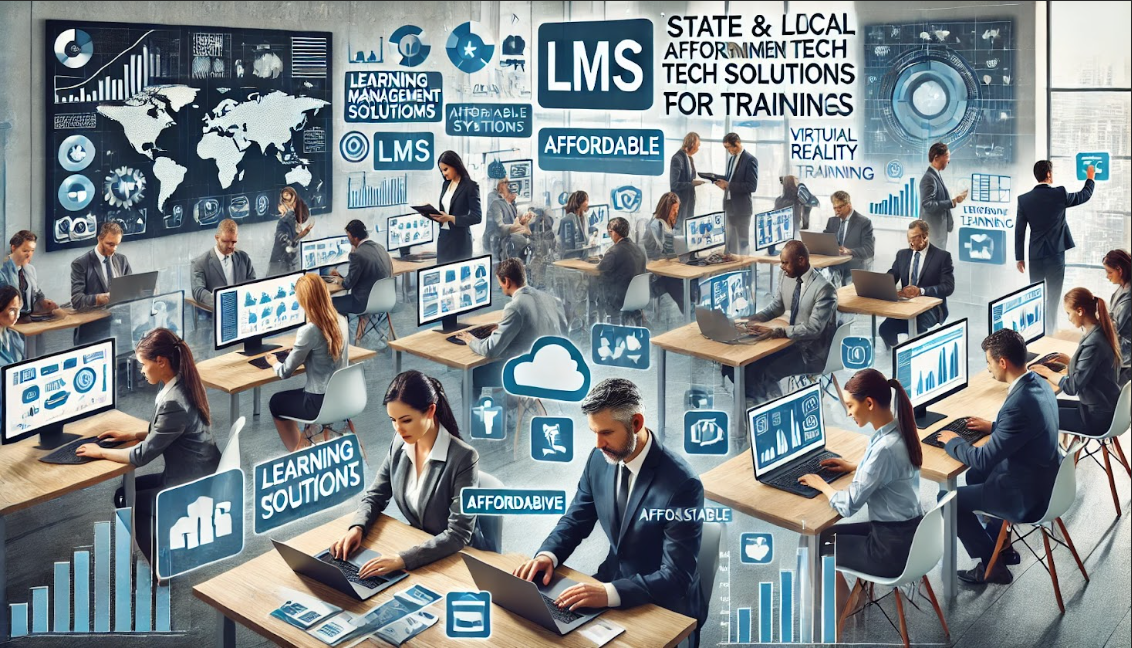
Today’s Morning Buzz is brought to you by Dr. Bill Brantley, President and Chief Learning Officer of BAS2A (consultancy) in College Park, MD. Connect with Bill on LinkedIn.
- What I’m binging: “Kolchak: The Night Stalker”
- What I’m listening to: Paul Giamatti’s CHINWAG with Stephen Asma
- Who my pets are: Teddy the Cat and Toby the Cat
State and local governments operate in a dynamic environment where keeping up with new rules, tech advances, and industry standards is crucial. Training departments carry the important task of providing staff with essential know-how and abilities for their jobs. The difficulty lies in not only producing quality training materials but also in their timely and easy distribution and assessing their effectiveness. Therefore, integrating a comprehensive set of training technologies is key to meeting these needs.
Selecting the right training technologies and integrating them into an effective tech stack can be challenging. With an abundance of platforms and tools inundating the market, all promising to revolutionize education, it is essential to determine what approaches you can adopt to ensure that your chief learning officer (CLO) makes informed decisions aligned with your organization’s goals.
Introducing the L.E.A.R.N. Framework
Employ the L.E.A.R.N. (Learnability, Engagement, Accessibility, Reporting, and Needs) framework to assist state and local government CLOs with choosing appropriate elements for their instructional technology stack.
Learnability
The core of any suite of educational technology tools is their capacity to facilitate efficient learning. The concept of learnability focuses on the ability of the platform or tool to support various learning styles and incorporate interactive elements such as quizzes, simulations, and hands-on scenarios. For example, implementing a Learning Management System (LMS) that supports microlearning can break down complex information into small, digestible pieces for easier retention.
Engagement
When educational content is engaging and informative, it boosts student involvement. Using technologies that feature gamification, peer collaboration, and interactive content can significantly increase engagement. For example, utilizing a virtual reality (VR) system might immerse employees in simulated environments to practice emergency procedures.
Accessibility
It is essential that training is available universally and at any given time. Assess whether the technology supports learning on-the-go, use without internet connection, and compatibility with various devices, thus allowing staff to interact with training content at their convenience no matter their location or work schedule. For instance, a mobile-optimized Learning Management System (LMS) allows staff working in the field to partake in training sessions on their smartphones during downtimes.
Reporting
Evaluating the effectiveness of training programs is crucial for continuous improvement. Monitoring and measuring participant development through detailed analytics is essential. A Learning Management System (LMS) with built-in analytics can identify the strong and weak points of course modules, directing targeted improvements.
Needs
It is essential that the chosen technologies align with the needs of your organization and workforce. This involves understanding your employees’ training requirements and ensuring that the technological solutions fulfill these needs. A thorough assessment can result in selecting tools that offer considerable advantages. For example, if your staff frequently works with hazardous materials, investing in an e-learning platform that focuses on safety training is imperative.
Low-Cost Training Technologies
Setting up a cost-effective training tech stack is possible. Below are some affordable technologies for training departments:
- Google Classroom: A free tool that provides a straightforward platform for creating, distributing, and grading assignments. It’s especially useful for smaller departments with limited budgets.
- Moodle: An open-source LMS that offers extensive customization options and a wide range of plugins. It allows for microlearning, quizzes, and other interactive elements at no cost.
- Kahoot!: This game-based learning platform is free and can enhance engagement through quizzes and interactive sessions. It’s particularly effective for making learning fun and interactive.
- Trello: While not a traditional LMS, Trello can be used to organize training tasks and track progress. It’s an excellent tool for project management and collaboration.
- Zoom: For virtual training sessions, Zoom offers a free tier with ample features, including breakout rooms and recording capabilities.
- H5P: This free plugin for Moodle and other platforms enables the creation of rich, interactive content like quizzes, interactive videos, and presentations.
- Canva: While primarily a design tool, Canva offers free templates that can be used to create visually appealing training materials and presentations.
- Slack: This communication tool has a free version that can be used to create channels for various training topics, facilitating social learning and instant communication.
Utilizing these affordable technological solutions, training divisions can create an extensive and efficient suite of training tools while remaining within financial constraints. These instruments, integrated with the L.E.A.R.N. model, guarantee that your training initiatives are captivating, reachable, and in harmony with your company’s objectives.
Selection of the right training technologies is key for state and local government training departments to build an integrated tech stack. By applying the L.E.A.R.N. framework, chief learning officers can ensure that their technology supports learnability, engagement, accessibility, reporting, and needs alignment. This approach enhances the caliber of training and ensures that it is accessible when and where it’s most needed, resulting in a more skilled and efficient workforce.
